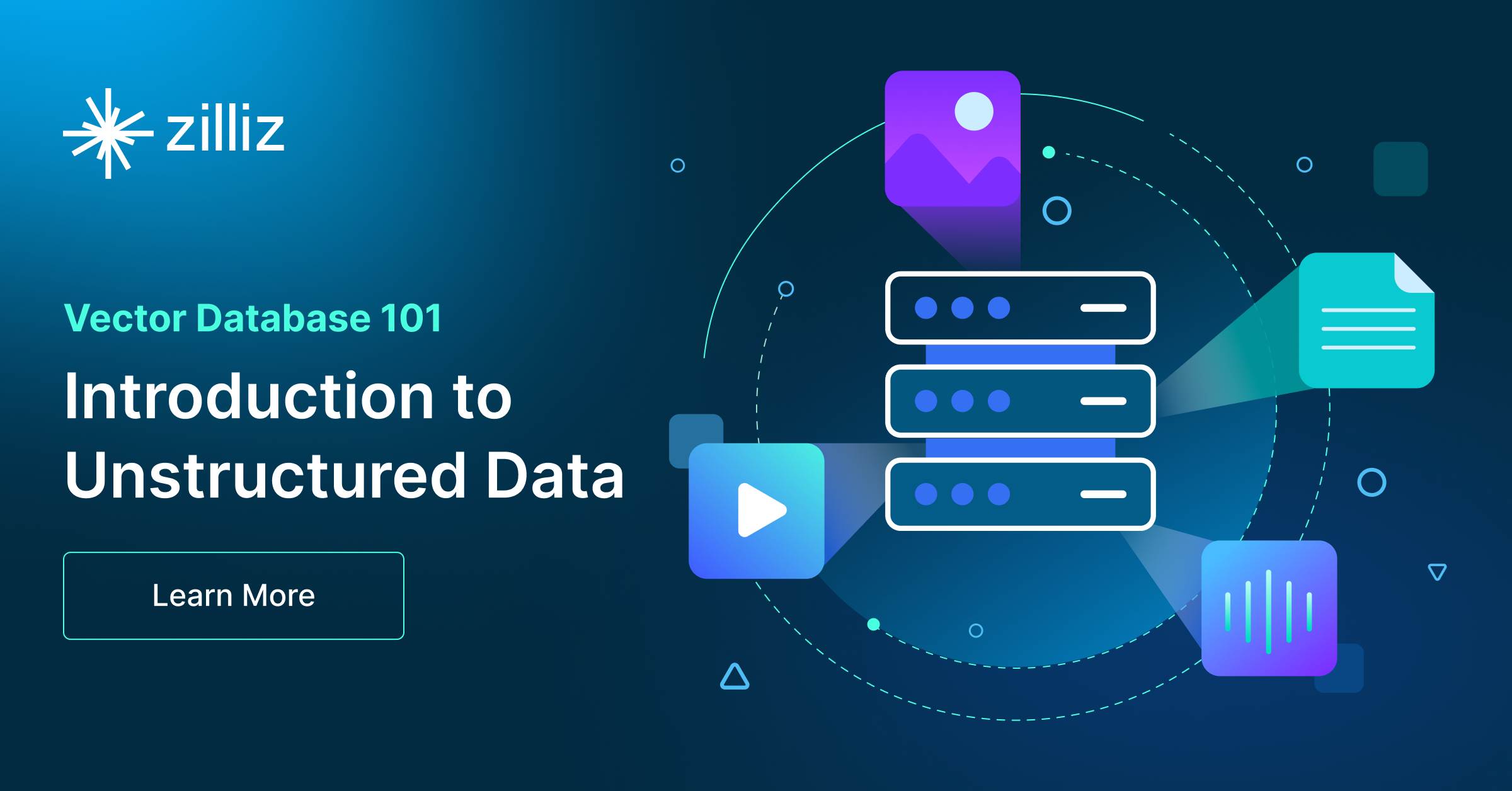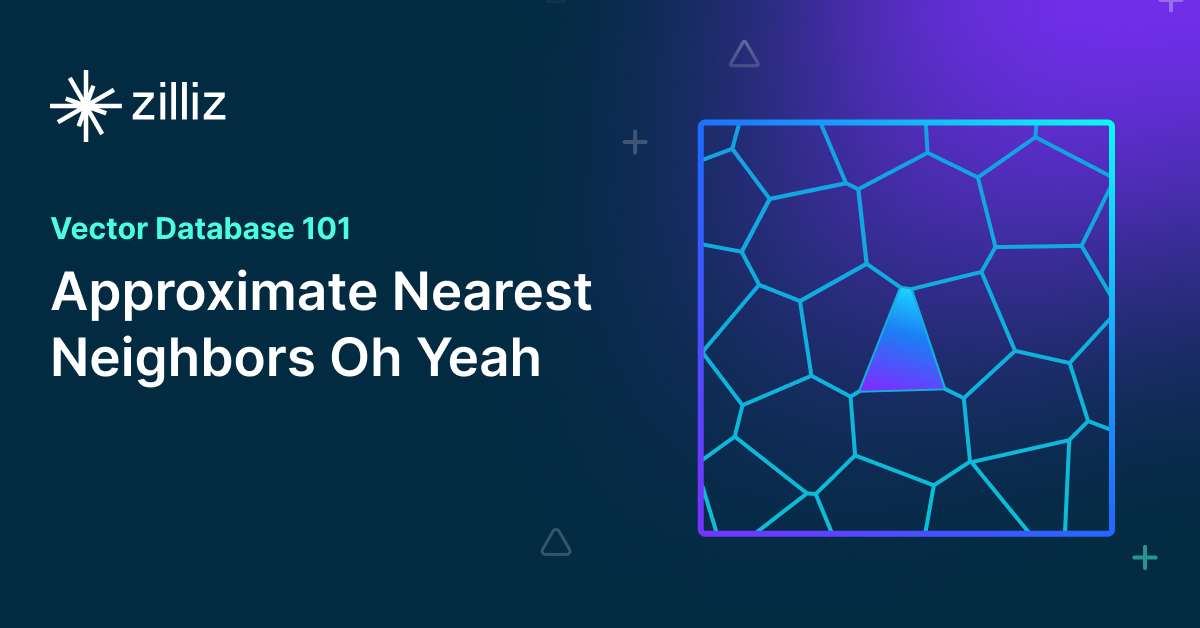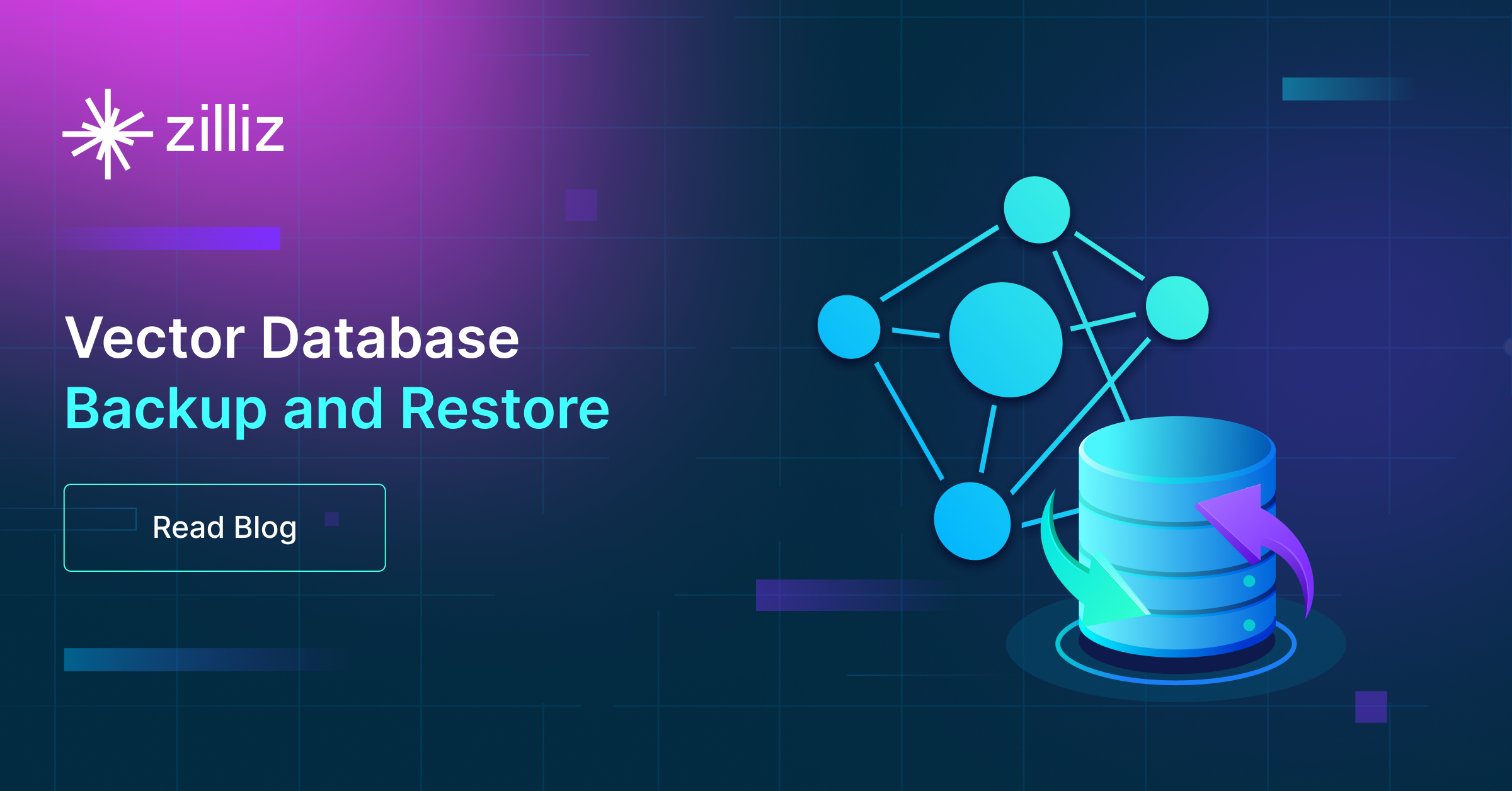Vector Library vs Vector Database: Which One is Right for You?
Dive into the differences between these two technologies, their strengths, and their practical applications, providing developers with a comprehensive guide to choosing the right tool for their AI projects.
Read the entire series
- Introduction to Unstructured Data
- What is a Vector Database and how does it work: Implementation, Optimization & Scaling for Production Applications
- Understanding Vector Databases: Compare Vector Databases, Vector Search Libraries, and Vector Search Plugins
- Introduction to Milvus Vector Database
- Milvus Quickstart: Install Milvus Vector Database in 5 Minutes
- Introduction to Vector Similarity Search
- Everything You Need to Know about Vector Index Basics
- Scalar Quantization and Product Quantization
- Hierarchical Navigable Small Worlds (HNSW)
- Approximate Nearest Neighbors Oh Yeah (Annoy)
- Choosing the Right Vector Index for Your Project
- DiskANN and the Vamana Algorithm
- Safeguard Data Integrity: Backup and Recovery in Vector Databases
- Dense Vectors in AI: Maximizing Data Potential in Machine Learning
- Integrating Vector Databases with Cloud Computing: A Strategic Solution to Modern Data Challenges
- A Beginner's Guide to Implementing Vector Databases
- Maintaining Data Integrity in Vector Databases
- From Rows and Columns to Vectors: The Evolutionary Journey of Database Technologies
- Decoding Softmax Activation Function
- Harnessing Product Quantization for Memory Efficiency in Vector Databases
- How to Spot Search Performance Bottleneck in Vector Databases
- Ensuring High Availability of Vector Databases
- Mastering Locality Sensitive Hashing: A Comprehensive Tutorial and Use Cases
- Vector Library vs Vector Database: Which One is Right for You?
- Maximizing GPT 4.x's Potential Through Fine-Tuning Techniques
- Deploying Vector Databases in Multi-Cloud Environments
- An Introduction to Vector Embeddings: What They Are and How to Use Them
Confused about vector libraries vs vector databases? This article will dive into the differences between these two technologies, their strengths, and their practical applications in vector embeddings generated by machine learning models, providing developers with enough information to choose the right tool for your AI projects.
In artificial intelligence (AI) and machine learning (ML), efficient management of vector embeddings is crucial for building robust and scalable solutions. Two key tools that have emerged to address this need are vector libraries and vector databases. While both deal with high-dimensional vector embeddings, they serve distinct purposes and offer unique advantages. In this post, we'll look into the differences between these two technologies, their strengths, and their practical applications, providing developers with a guide to choosing the right tool for their AI projects.
The Core Distinctions between Vector Libraries and Vector Databases
While purpose-built vector databases excel at semantic search, other options are available. Before the advent of vector databases (sometimes called vector store), developers relied on vector searching libraries, such as FAISS, ScaNN, and HNSW, for vector retrieval tasks.
Vector search libraries can be valuable for quickly building high-performance vector search prototypes. For instance, FAISS, an open-source library developed by Meta, is designed for efficient semantic search and dense vector clustering. It can handle vector collections of any size, even those that cannot be fully loaded into memory, and provides tools for evaluation and parameter tuning. Despite being written in C++, FAISS offers a Python/NumPy interface, making it accessible to many developers.
However, vector search libraries are lightweight Approximate Nearest Neighbor (ANN) libraries rather than managed solutions with limited functionality. While they can be sufficient for unstructured data processing in small-scale or prototype systems, scaling these libraries for vector search becomes increasingly challenging. Moreover, they do not allow modifications to vectors stored in their index data or querying during data import.
Vector databases, on the other hand, are optimized for large-scale unstructured data storage and retrieval. They can store and move high dimensional vectors and query millions or even billions of vectors, all while providing real-time responses. This scalability is a testament to their ability to meet growing business needs, providing developers with a sense of reassurance.
Vector databases like Milvus offer user-friendly, structured data, semi-structured an unstructured data features, including hybrid search (dense and sparse vector search with meta data filtering), architectures that are cloud-native, and support large number of tenants (millions), high availability and scalability. These features become increasingly important as datasets and customer bases grow.
Additionally, vector databases operate at a different abstraction layer than vector search libraries. While vector databases are full-fledged services, ANN libraries are components meant to be integrated into the applications you're developing. In this sense, ANN libraries are one of the many components that vector databases are built on top of, similar to how Elasticsearch is built on top of Apache Lucene.
Vector Libraries: Optimized for efficient semantic search
Vector search algorithms play a crucial role in enabling efficient similarity searches for vector embeddings. Several types of algorithms, each with its own strengths and trade-offs, are designed to accelerate the vector search process while maintaining acceptable levels of accuracy and recall. Here is a list of four different types of vector search algorithms:
hash-based indexing (e.g., locality-sensitive hashing),
tree-based indexing (e.g., ANNOY),
cluster-based or cluster indexing (e.g., product quantization), and
graph-based indexing (e.g., HNSW, CAGRA)
Vector libraries are lightweight Approximate Nearest Neighbor (ANN) libraries, such as Faiss, HNSW, and ScANN. They are designed to optimize efficient similarity search and clustering of dense vectors.
Top Vector Search Libraries and Algorithms
Faiss (Facebook AI Similarity Search) Library
Faiss is a vector search library developed by the team at Meta. It has multiple indices implemented, including Flat indexes, Cell-probe methods (IndexIVF indexes), IndexHNSW variants, Locality Sensitive Hashing methods, and Indexes based on Product Quantization codes.
Learn more about FAISS | Github | Documentation
HNSW (graph-based)
The Hierarchical Navigable Small World (HNSW) algorithm is a fully graph-based approach for approximate nearest neighbor searches that incrementally builds a multi-layer structure of hierarchical proximity graphs, with elements randomly assigned to maximum layers using an exponentially decaying probability distribution. This design, combined with starting searches from the upper layer, scale separation of links, and a heuristic for selecting proximity graph neighbors, enables HNSW to achieve logarithmic complexity scaling and outperform previous open-source vector-only approaches in terms of performance, especially at high recall levels and with highly clustered data.
Learn more about HNSW | Github | Paper
DiskANN (disk based)
DiskANN is an ANNS algorithm that balances high accuracy and low DRAM footprint by leveraging auxiliary SSD storage. This approach allows DiskANN to index larger vector datasets per machine than state-of-the-art DRAM-based solutions, making it a cost-effective and scalable option. SSD storage will enable DiskANN to index up to a billion vectors while maintaining 95% search accuracy with low 5ms latencies. In contrast, existing DRAM-based algorithms typically peak at indexing 100-200 million vectors for similar latency and accuracy levels. DiskANN's ability to index datasets 5-10 times larger than DRAM-based solutions on a single machine opens up new possibilities for scalable and accurate vector search in various domains without expensive DRAM resources.
Learn more about DiskANN | Github
ANNOY (tree-based)
Annoy (Approximate Nearest Neighbors Oh Yeah) takes a tree-based approach to approximate nearest neighbor searches, utilizing a forest of binary trees as its core data structure. For those familiar with random forests or gradient-boosted decision trees in machine learning, Annoy can be seen as a natural extension of these algorithms but applied to approximate nearest-neighbor searches instead of prediction tasks.
While HNSW builds semantic search on upon connected graphs and skip lists multiple nodes, Annoy's key idea is to partition the vector space repeatedly and search only a subset of these partitions for nearest neighbors. This tree-based indexing approach offers a unique trade-off between search speed and accuracy, making Annoy a compelling choice for applications that demand a balance between these two factors.
Learn more about ANNOY | Github | Documentation
NVIDIA CAGRA (graph based)
CAGRA is a graph construction approach that uses GPU parallelism for approximate nearest-neighbor searches. Unlike the iterative CPU-based method used in HNSW, CAGRA begins by creating an initial dense graph using IVFPQ or NN-DESCENT, where nodes have numerous neighbors. It then sorts and prunes less important edges, optimizing the graph structure for efficient GPU-accelerated traversal. By embracing a GPU-friendly construction process, CAGRA aims to fully utilize modern GPUs' parallel processing capabilities for faster high-dimensional nearest-neighbor searches.
Learn more about CAGRA | Documentation | Paper
Vector Database: Optimized for production use cases
Vector databases are solutions designed to store, index, and query vector embedding data efficiently. They are especially useful for large-scale production applications.
Key Advantages of Vector Databases:
Scalability and tunability: Vector databases are built to handle large volumes of high-dimensional data, allowing for horizontal scaling across multiple machines as data grows. Production workloads: Vector databases can handle constant changes to your vector database work and embeddings via upserts, deletes, etc., and automatically update the index to ensure performant queries. Integrated Data Management: With built-in tools for data management, querying, and result retrieval, vector databases simplify integration and accelerate development time.
Multi-tenancy and data isolation: Multi user support is a standard feature in vector databases offer but creating a separate vector database for each user is impractical. It’s resource intensive and will slow down the overall system. Instead focus on data isolation within a shared infrastructure.
Data isolation means that operations within one collection – add, remove, query vectors – are invisible to the rest of the system. This is unless the collection owner chooses to share the data.
This way we balance resource utilization and data privacy. Multiple users can exist in the same vector database system and their data will be separate and secure. The system can then manage access controls and sharing permissions at the collection level without compromising on isolation or performance.
Flexibilty: Vector databases have many advantages but flexibility is the winner. These systems can handle different types of vector data, sparse to dense, and different data formats like numerical values, text strings and binary content. This is super useful for semantic queries and machine learning tasks. By handling high dimensional vector data in a vector space these vector databases excel can do fast and precise search and retrieval. This is important for many modern applications from recommendation systems to natural language processing where you need to find and compare complex data points fast and accurate.
Vector databases must adapt to diverse operational demands, including varying rates of data insertion and querying, as well as different hardware configurations. These factors can change significantly depending on the application. Consequently, the most robust vector database systems provide extensive configuration options, enabling users to optimize the system's behavior to match their specific requirements and constraints.
To illustrate the difference between a Vector Library and a Vector Database in abstraction, consider inserting a new unstructured data element into a vector database. In Milvus, this process is straightforward:
from pymilvus import Collection
collection = Collection('book')
mr = collection.insert(data)
You can easily insert high dimensional vectors into the Milvus vector database with just three lines of code. In contrast, vector search libraries like FAISS or ScaNN lack this simplicity and often require manually re-creating the entire index at certain checkpoints to accommodate new data. Even if this were possible, most vector indexes and search libraries still lack the scalability and multi-tenancy features that make full vector index and databases invaluable for large-scale applications.
While vector search libraries can be useful for prototyping and small-scale applications, vector databases are better suited for production environments with growing datasets and user bases.
By understanding the strengths and limitations of both approaches, developers can make informed decisions and leverage the most appropriate tools like a vector database for their open source vector database search and unstructured data management needs.
Choosing the Right Tool: Performance vs. Scalability
When it comes to choosing between vector libraries and vector databases, the decision often boils down to a trade-off between performance and scalability. Here is a simple table with some of the key differences.
| Vector Database | Vector Library | |
|---|---|---|
| Purpose built for Vectors | ✔ | ✔ |
| Multi-replication | ✔ | ✘ |
| RBAC | ✔ | ✘ |
| Hybrid Search | ✔ | ✘ |
| Support for both stream and batch of vector data | ✔ | ✘ |
| Backup | ✔ | ✘ |
Vector Libraries: Ideal for prototyping or datasets that don’t change much.
Vector Databases: Optimized for efficient storage, retrieval, and management of large-scale, high-dimensional data, making them well-suited for AI development and deployment at scale.
Conclusion:
As AI and machine learning continue to push the boundaries of innovation, the efficient management of high-dimensional vector embeddings remains a critical challenge for data scientists. While vector libraries and vector databases play important roles in this domain, understanding their strengths and limitations is crucial for leveraging the right tool.
Vector libraries, such as FAISS, Annoy, and HNSW, excel in providing high-performance similarity search and vector clustering capabilities. These lightweight libraries are well-suited for prototyping, small-scale applications, and scenarios where datasets are relatively static and don't require frequent updates.
On the other hand, vector databases, like Milvus, are designed to thrive in production environments with large-scale, ever-growing datasets and user bases. With their scalability, integrated data management features, and ability to handle frequent updates seamlessly, vector databases empower organizations to develop and deploy AI solutions that can scale effortlessly.
Ultimately, the choice between a vector library and a vector database depends on the specific requirements of your project, the size and dynamic nature of your dataset, and the balance you need to strike between performance and scalability.
FAQs
What are vector stores for?
Vector stores are for managing and store vectors, searching high dimensional vector data, vector search and similarity. This is key for machine learning and data science.
How do vector databases help with real time analysis?
Vector databases help with real time analysis by allowing for fast similarity search and immediate raw data access, which is critical for dynamic environments and AI. This makes data driven decision making much faster.
What are some use cases for vector databases?
Vector databases are used for product recommendations in e-commerce, music discovery on Spotify and fraud detection in banks. These traditional databases are examples of complex high dimensional data.
What to consider when choosing between a vector store and a vector database?
When choosing between a vector store and a vector database consider the complexity and size of your data, integration with your existing infrastructure, cost and performance requirements. This will help you choose the right one for you.
- The Core Distinctions between Vector Libraries and Vector Databases
- Vector Libraries: Optimized for efficient semantic search
- Vector Database: Optimized for production use cases
- Choosing the Right Tool: Performance vs. Scalability
- Conclusion:
- FAQs
Content
Start Free, Scale Easily
Try the fully-managed vector database built for your GenAI applications.
Try Zilliz Cloud for FreeKeep Reading

Introduction to Unstructured Data
Buckle up for the first tutorial in our Vector Database 101 series and untangle the intricacy around Milvus with us every week.

Approximate Nearest Neighbors Oh Yeah (Annoy)
Discover the capabilities of Annoy, an innovative algorithm revolutionizing approximate nearest neighbor searches for enhanced efficiency and precision.

Safeguard Data Integrity: Backup and Recovery in Vector Databases
This blog explores data backup and recovery in vectorDBs, their challenges, various methods, and specialized tools to fortify the security of your data assets.